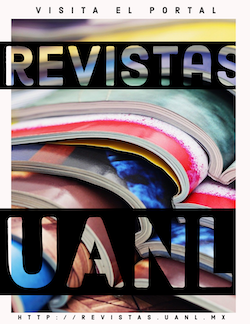Estrategias de aprendizaje del segundo idioma y su variación a través de niveles de competencia en los alumnos Iraníes de EFL
DOI:
https://doi.org/10.29105/rinn3.6-10Palabras clave:
Competencia, EFL, Segundo Idioma ExtranjeraResumen
Este estudio se intenta determinar la relación entre las estrategias empleadas para aprendizaje del idioma. Además, trata de ver qué estrategias útiles se usan para el aprendizaje correspondiente con la competencia de los idiomas. Un test simulado de TOEFL (REA, 1993) fue utilizado. El inventario de estrategia de Oxford (Oxford, 1990) fue usado para estimar la frecuencia de estas estrategias. Estos resultados como los anteriores sobre este tema confirman una relación directa entre estas estrategias y los niveles de la competencia y además, presentan los tipos de estrategias adoptadas por los niveles avanzados, intermedios y básicos. Resultados sugieren el uso de estrategias compensatorias mego-cognoscitivas para los niveles avanzados de los aprendices para elevar el nivel de competencia.
Descargas
Citas
Bowen, D. J., H. Madsen. & A. Hilfery. 1985. TESOL techniques and procedures. Massachusetts, Newbury House Publication, INC.
Brown, D. H. 2000. Principles of language learning and teaching. (4th ed.). White Plains, New York, Longman.
Brown, H. D. 20001. Teaching by principles: an interactive approach to language pedagogy. (2nd ed.). London. Longman.
Bialystok, E. 1978. A theoretical model of second language learning. Language learning, 28: 69-83.
Chamot, A. 1987. The learning strategies of ESL students. New York, Prentice Hall.
C
hastain, K. 1988. Developing second-language learning skills: theory and practice. (3rd ed.). Chicago: Harcourt Brace Javanovich Publishers.
Cohen, D. A. 1990. Language learning: insights for learners, teachers and researchers. New York, Newbury House & Harper Collins.
Cohen, D. A. 1998. Strategies in learning and using a second language. TESL- EJ. 3(4): 1-5.
Cook, V. 1991. Second language learning and language teaching. New York, Edward Arnold.
Cummins, J. 1979. Putting language proficiency in its place: Responding to critiques of the conversational/academic language distinction. TESOL Quarterly, 12: 17- 21.
Cummins, J. 1980. The cross-lingual dimensions of language proficiency: Implications for bilingual education and the optimal age issue. TESOL Quarterly, 14: 175-187.
Cummins, J., & M. Swain. 1983. Analysis by rhetoric: Reading the text or the readers‟ own projections? a reply to Edelsky et al. Applied Linguistics, 4 (1): 23-41.
Ellis, R. 1987. Second language acquisition in context. New York, Prentice Hall.
Ellis, R. 1994. The study of second language acquisition. Oxford, Oxford University Press.
Green, J. M., & R. L. Oxford. 1995. A closer look at learning strategies, L2. proficiency, and gender, TESOL Quarterly, 29: 261-297.
Hughes, A. 1996. Testing for language teachers. (8th printing). Cambridge, Cambridge University Press.
Naiman, H., A. Frohlich and J. Todesco. 1975. The good second language learner. In: J. C. Richards & W. A. Renandya. 2002. Methodology in language teaching: an anthology of current practice. New York, Cambridge University Press.
Nation-Thomas, W. P. 1992. An analysis of the research methodology of the Ramirez study. Bilingual Research Journal, 16 (1-2): 213-25.
Nunan, D. 1999. Second language teaching and learning. Boston. Massachusetts. Heinle & Heinle.
O‟Malley, J. M., & A. Chamot. 1990. Learning strategies in second language acquisition. Cambridge, Cambridge University Press.
Oxford, R. L. 1990. Language learning strategies: A synthesis of studies with implications for strategy training. System, 17: 235-247.
Oxford, R. L. 1990. Language learning strategies: What every teacher should know. New York, Heinle & Heinle.
Richards, J. C., J. Platt & H. Platt. 1992. Dictionary of language teaching and applied linguistics. (2nd Ed.). London, Longman.
Rubin, J. 1975. What the “good language learner” can teach us. TESOL Quarterly, 9 (11): 41-90.
Rubin, J. 1987. Learning strategies: Theoretical assumptions, research history and typology. Englewood Cliffs, New Jersy, Prentice Hall.
Stern, H. H. 1997. Fundamental concepts of language teaching. (7th impression). London, Oxford University Press.
Su, M., M. 2005. A study of EFL technological and vocational college students‟ language learning and their self-perceived English proficiency. Electronic Journal of Foreign Language Teaching. (On-line), 2 (1). Available at: http://e-flt.nus.edu.sg/.
Vossoughi, H. & J. Javaherian. 2000. An encyclopedic dictionary of teaching English as a foreign language. Tehran, Rahnama Publication.
Weistein, C. & R. Mayer. 1986. The teaching of learning strategies. (3rd Ed.). New York, Macmillan.
Wenden, A. & J. Rubin. 1987. Learner strategies in language learning. New Jersey, Prentice Hall.
Descargas
Publicado
Cómo citar
Número
Sección
Licencia
Derechos de autor 2017 Innovaciones de Negocios

Esta obra está bajo una licencia internacional Creative Commons Atribución-NoComercial-CompartirIgual 4.0.
La revista InnOvaciOnes de NegOciOs es una revista electrónica gratuita y de acceso abierto de carácter científico-académico y es una publicación de la Universidad Autónoma de Nuevo León, en la cual los autores conservan sus derechos de autor y otorgan a la revista el derecho exclusivo de primera publicación del trabajo. Se permite que terceros utilicen el contenido publicado, siempre y cuando se reconozca la autoría del trabajo y se cite la primera publicación en esta revista.
Para mayor información favor de comunicar a la Secretaria de Investigación (FACPyA) de la Universidad Autónoma de Nuevo León. Teléfono: (81) 1340-4431. Correo electrónico: revinnova.negocios@uanl.mx









